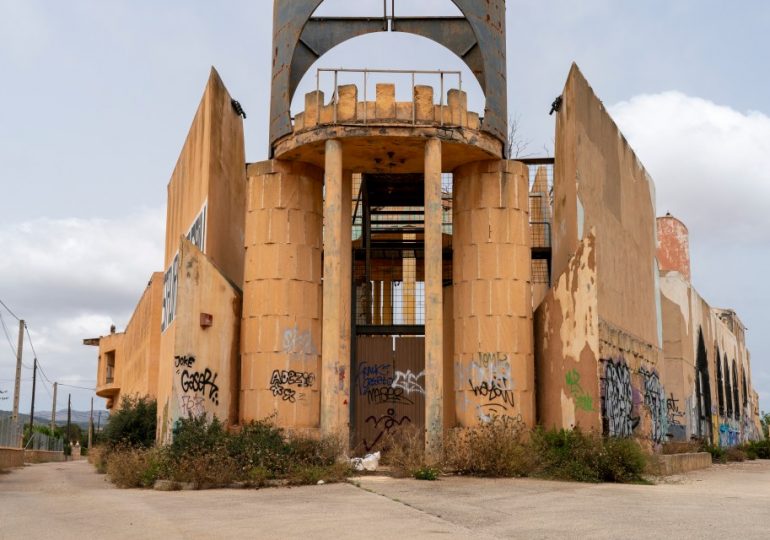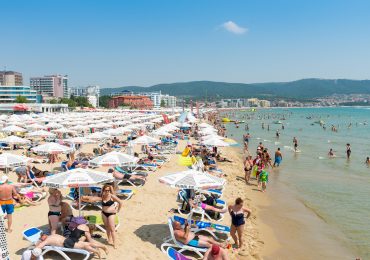THIS club in Majorca once attracted THOUSANDS of party-goers with half-naked dancers, fireworks and famous performers – but now it lays completely desolate.
The Dhraa nightclub, situated near the popular Cala Millor strip, first opened its doors in 1984 to holidaymakers, celebs and locals alike.
Louis WoodThe bizarre ancient exterior comes from it’s take-over in 1993[/caption]
Louis WoodThe once packed-out club now collects dust after closing its doors years ago[/caption]
The whopping 9000sq metre plot has been left to rot
The Dhraa used to be the hottest spot in town, with GoGo dancers dotted around the venue as music blared
Upon opening, the club let in over 10,000 people
dhraa.blogspotThe club was completely open-air and set off fireworks for clubbers to watch[/caption]
The massive venue sticks out like a sore thumb – looking more similar to ancient ruins than it does an ex-club.
What once was a popular party destination now has seemingly become a popular place for fly-tippers, with rubbish dumped around the location and the walls coated in graffiti.
In the 80s, the iconic club opened its doors and welcomed more than 10,000 partygoers, boasting several bars, some ‘private’ areas and an extravagant spiral staircase that led to an open-air dance floor.
The Dhraa club building was originally designed by Spanish architect José Ángel Suárez.
It was seen as incredibly ahead of its time, which may have been part of the attraction to attend nights out there.
But since welcoming performances from the likes of Brit band the Immaculate Fools, the club has been abandoned for many years.
During performances or DJ sets, laser beams would light up the night sky in an amazing spectacle that often upset pilots in the sky.
Around the club, you’d come across GoGo dancers, jugglers and trapeze artists, all while great music would blare and fireworks would explode above.
But in 1993, the club changed hands and its appearance was completely transformed to a more historical style, renaming it Camelot.
Up until a few years ago, in a desperate plea to keep the doors open, the restaurant was in use – but that soon shut.
Now it sits in the middle of the desert, locked off from urban explorers and left to rot.
From the outside-looking-in, it appears that the main infrastructure remains – sporting metal railings, wooden archways and steps up to the stage.
The once bright, exotic, party venue enticing thousands of tourists and celebs every year now stands characterless and desolate.
The complex, covering over 9,000 square metres is a renovator’s dream with a bar, exhibition hall, swimming pool, a house and thousands of square metres of parking.
It has been up for sale, advertised as a property in need of investment with a £233,500 price tag attached to it.
Louis WoodNow the abandoned building is locked off from urban explorers[/caption]
Louis WoodGraffiti covers most of the walls[/caption]
Louis WoodThe iconic club’s infrastructure remains – but in awful condition[/caption]
Louis WoodIt appears to have become a popular fly-tipping spot[/caption]
Most abandoned spots end up quickly falling victim to graffiti artists looking to scrawl symbols and messages across failed businesses.
In contrast to the empty, lifeless building, the rest of the area remains the bustling popular hot spot everyone loves.
Cala Millor is a hugely popular tourist destination, sporting one of the top beaches on the island, abcMallorca reports.
Along the strip, it has bars with live music and many restaurants, with many Brits holidaying there every year.
MAJORCA’S TOURISM ROW
It comes as holiday wars are occurring on the popular island, with locals doing anti-tourism demos while Brit tourists clap back.
Lapping up the Magaluf sunshine, holidaymaker Zoe Kemp dismissed the anti-tourism demos which are sweeping the Costas as “completely hypocritical”.
She told The Sun: “They rely on tourists to survive. If you look around, everything is based on tourists.
“Places like Magaluf are advertised as cheap drinking holidays. We help the economy.”
The resort lies on the west coast of Majorca, which receives around 40 per cent of its income from tourism.
Yet in May 15,000 people stormed through the island’s capital Palma jeering at visitors as they sat down for meals.
Stickers have been plastered around the island, reading: “More tourists? No thanks”, “Stop Tourism” and “Tourists go home — you are not welcome here”.
Last month more than 300 protesters “reclaimed” the Instagram-famous cove Calo des Moro in the south of the island by blocking foreigners from entering the 130ft stretch of sand.
There are plans for another rally on July 21 across the four main Balearic Islands, Majorca, Menorca, Ibiza and Formentera — just as many UK schools break up for the summer.
Louis WoodCala Millor, where the ex-club is situated, is a hugely popular tourist destination[/caption]
Louis WoodThe venue has been up for sale at nearly £250,000[/caption]
Anti-tourist measures sweeping hotspots
MAJORCA and Menorca are just some of the European hotspots implementing anti-tourist measures.
Many top holiday destinations across the continent are taking action to prevent unwanted travellers from taking over their towns and cities.
Locals feel they can no longer live in the iconic destinations because they have become overcrowded, unsafe and uncomfortable.
They say there are too many cars on the roads, traffic congestion, overcrowded beaches, blocked access roads, ruined beauty spots and just too many holidaymakers flocking to the island which expects record figures this summer.
In April, thousands of people took to the streets in Tenerife to demand restrictions on holidaymakers after telling Brits to “go home”.
The anti-tourist hordes filled a square in the capital brandishing banners including some that read “You enjoy we suffer” in English.
Protests also took place at the same time on other popular Canary Islands including Lanzarote and Gran Canaria.
The marches were organised under the slogan “The Canary Islands have a limit.”
Hotel bosses in Benidorm have even admitted they are “very worried” by the anger growing amongst island residents but branded holiday homes in Spain a “virus”.
More recently, the Committee on Tourism, Trade, Employment, Culture and Sport reportedly approved an initiative to reintroduce a cap on cruise ships to Palma, Majorca’s capital.
Politicians are keen to implement a new set of rules on cruise ships in terms of taxation, the environment or the use of less polluting fuels to lower numbers coming into the Balearics.









